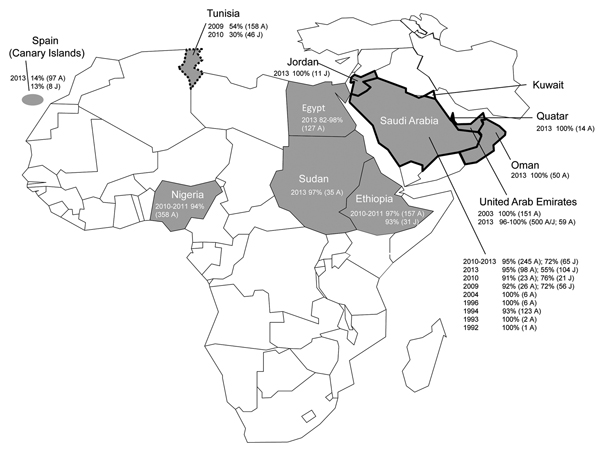Volume 20, Number 8—August 2014
Dispatch
Geographic Distribution of MERS Coronavirus among Dromedary Camels, Africa
Figure 2

Figure 2. Geographic distribution of serologic evidence for Middle East respiratory syndrome coronavirus (MERS-CoV) or MERS-like CoV circulation in dromedaries in Africa and the Arabian PeninsulaGray shading indicates countries with seropositive dromedaries; solid black outline indicates countries with primary human cases; dotted outline indicates countries with secondary human casesFor each country with affected dromedaries, the year of sampling, % seropositive, total number tested, and age group are indicatedA, adult, >2 years of age; J, juvenile, ≤2 years of ageDetails on serologic tests used and references are in Table 1.
1These authors contributed equally to this article.
Page created: July 18, 2014
Page updated: July 18, 2014
Page reviewed: July 18, 2014
The conclusions, findings, and opinions expressed by authors contributing to this journal do not necessarily reflect the official position of the U.S. Department of Health and Human Services, the Public Health Service, the Centers for Disease Control and Prevention, or the authors' affiliated institutions. Use of trade names is for identification only and does not imply endorsement by any of the groups named above.